Data Lineage Concepts, Examples & Tools
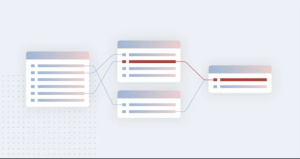
Data lineage can be a complex and confusing topic. It’s hard to know where your data comes from, how it’s been changed, and what the impact of those changes has been. Data lineage tools make tracing data easy and straightforward. By understanding your data’s history you can more effectively troubleshoot issues, optimize processes, and make better decisions. In this blog, you will learn about data lineage concepts, examples, and tools. As a data professional, you must have a strong understanding of data lineage. What is Data Lineage and why is it important? Data lineage is a term used in data management to describe the path that data takes from its …
Data Analyst Technical & Soft Skills

Do you want to become a data analyst? It’s a great career choice! Data analysts are in high demand these days. Companies rely on data analysts to help them make better decisions by turning data into insights. In order to be successful, data analysts need a mix of technical skills and soft skills. Technical skills include expertise in analyzing data. Soft skills include communication and problem-solving skills. Data analysts must be able to take data and turn it into insights that help their company make better decisions. They also need to be able to effectively communicate those insights to people who may not have a technical background. In this blog …
Performance metrics for Time-series Forecasting models
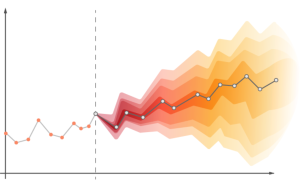
Time-series forecasting is a specific type of forecasting / predictive modeling that uses historical data to predict future trends in a particular time series. There are several different metrics that can be used to measure the accuracy and efficacy of a time-series forecasting model, including Mean Absolute Error (MAE), Root Mean Squared Error (RMSE), and others. By understanding these performance metrics, you can better assess the effectiveness of your time-series forecasting model and make necessary adjustments as needed. In this blog, you will learn about the different time-series forecasting model performance metrics and how to use them for model evaluation. Check out a related post – Different types of time-series …
Sample Dataset for Regression & Classification: Python
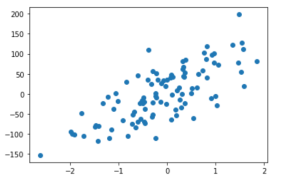
A lot of beginners in the field of data science / machine learning are intimidated by the prospect of doing data analysis and building regression (linear) & classification models in Python. But with an ability to create sample dataset using Python packages, you can practice your skills and build your confidence over a period of time. The technique demonstrated in this blog post to create and visualize / plot the sample dataset includes datasets that can be used for regression models such as linear regression and classification models such as logistic regression, random forest, SVM etc. You can use this technique to explore different methods for solving the same problem. …
Ranking Algorithms & Types: Concepts & Examples
Ranking algorithms are used to rank items in a dataset according to some criterion. Ranking algorithms can be divided into two categories: deterministic and probabilistic. Ranking algorithms are used in search engines to rank webpages according to their relevance to a user’s search query. In this article, we will discuss the different types of ranking algorithms and give examples of each type. What is a Ranking Algorithm? A ranking algorithm is a procedure that ranks items in a dataset according to some criterion. Ranking algorithms are used in many different applications, such as web search, recommender systems, and machine learning. A ranking algorithm is a procedure used to rank items …
Knowledge Graph Concepts & Machine Learning: Examples
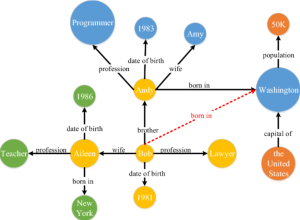
Knowledge graphs and machine learning are two important tools for understanding and making decisions in business. Knowledge graphs can be used to understand and model complex concepts, while machine learning is a process by which computers learn from data, without being explicitly programmed. Together, these two tools can be used to make better decisions in business by understanding the relationships between data points. In this blog, you will learn about the basics of knowledge graphs and machine learning, and how they can be used to improve decision making in business. What is a Knowledge Graph & how they can are used? A knowledge graph is a collection of data that …
AI / Machine learning (ML) Model Governance Framework

AI / Machine learning (ML) based solutions / applications have become increasingly important in business and industry. However, with the power to make decisions that can impact people’s lives comes a responsibility to use those tools ethically and responsibly. The machine learning model governance framework is designed to help businesses do just that. In this blog, you will learn about the AI / Machine Learning Model Governance framework, its benefits, and how you can implement it in your organization. What is AI / Machine learning (ML) model governance and why its important? Machine learning model governance is a set of process and related tools & frameworks that the businesses need …
Data Lake: Design principles & Best practices
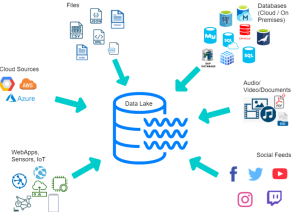
In today’s business world, data is king. The more data you have, the more insights you can glean about your customers, your products, and your operations. And the best way to collect and store all that data is in a data lake. A data lake is a data management and analytics platform that offers several benefits over traditional data warehouses. Data lakes have gained in popularity in recent years due to the growing volume of data being generated by businesses and organizations of all sizes. But before you can reap the benefits of a data lake, you need to design it correctly. The people who should be involved in designing …
Targeted Advertising & Machine Learning: Examples

Targeted advertising is nothing new. Businesses have been using targeted ads for years in order to try and increase sales. However, with the advent of machine learning, businesses are now able to target their ads more effectively than ever before. The importance of using machine learning for targeted advertising cannot be overstated. By using machine learning, businesses can target their ads more accurately and thus see a higher return on investment. This is because machine learning can take into account a variety of factors that humans would not be able to consider, such as browsing history and purchase history. As a business, it is important to stay ahead of the …
Linear Discriminant Analysis (LDA) Concepts & Examples
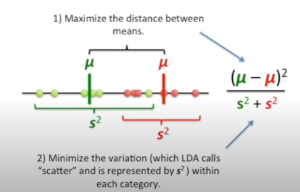
You may have heard of Linear Discriminant Analysis (LDA), but you’re not sure what it is or how it works. In the world of machine learning, Linear Discriminant Analysis (LDA) is a powerful algorithm that can be used to determine the best separation between two or more classes. With LDA, you can quickly and easily identify which class a particular data point belongs to. This makes LDA a key tool for solving classification problems. In this blog post, we will discuss the key concepts behind LDA and provide some examples of how it can be used in the real world! What is Linear Discriminant Analysis (LDA) and what are its …
Digital Twins & its Types: Concepts & Examples

You’ve probably heard of the term “digital twin” but aren’t sure what it means or how it can help your business. A digital twin is a virtual replica of a physical object or system. There are various different types of digital twins such as component, asset, system and process twins. Digital twins have become an important part of Industry 4.0 and the Internet of Things (IoT). They allow companies to improve product quality, optimize operations and reduce costs. For example, Airbus uses digital twins to monitor the health of its aircraft engines in real time. This helps them to identify potential problems early and take preventative action. In this blog …
100 Interview Questions for Deep Learning

If you’re looking for a job in deep learning, you’ll need to be prepared to answer some tough questions. In order to help you get started, we’ve put together a list of 100 interview questions for deep learning. While many of these questions are related to deep learning concepts, we have also listed several frameworks (Tensorflow, Pytorch, etc) related questions. By being prepared for these questions, you’ll be able to demonstrate your knowledge and expertise in this area, and increase your chances of landing the job! What is deep learning? How does machine learning differ from deep learning? What are the differences between shallow and deep learning? How does deep …
Code Quality Interview Questions for Software Developers

Code quality concepts must be understood well by software developers to write a good quality code. Also, technical lead and technical architects must understand the code quality (or coding) concepts very well in order to review the code (termed as code review) and ensure that good quality software is delivered to the customer. Pictorially, the following represents some of the experiences that software developers, tech leads or technical architects go through while developing software or reviewing software code quality. Enjoy the pictures :). Often code quality review of poorly written code results in lot of frustrations among project stakeholders. Thus, it is of utmost important to understand different nuances of writing …
Building Data Analytics Organization: Operating Models
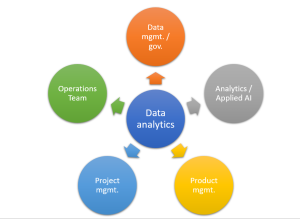
Most businesses these days are collecting and analyzing data to help them make better decisions. However, in order to do this effectively, they need to build a data analytics organization. This involves hiring the right people with the right skills, setting up the right infrastructure and creating the right processes. In this article, we’ll take a closer look at what it takes to set up a successful data analytics organization. We’ll start by discussing the importance of having the right team in place. Then we’ll look at some of the key infrastructure components that need to be put in place. Finally, we’ll discuss some of the key process considerations that …
Differences: Data Analyst & Business Analyst
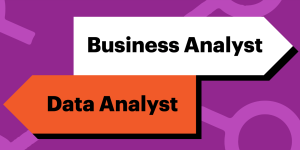
Data analysts and business analysts are two very different positions in the world of business. Data analysts are responsible for examining data and manipulating it into a format that is easy to understand, while business analysts are responsible for taking this data and using it to make informed business decisions. This is not to say that one job is more important than the other – both positions are necessary for a well-functioning company. However, it is important to understand the distinctions between these two jobs so that you can better identify which role you might be interested in pursuing. Data Analysts vs Business Analysts Data analysts and business analysts are …
Who is a Data Scientist? Test your Knowledge

Do you know what a data scientist is? You may think you do, but take this quiz to find out for sure! Data scientists are essential to modern business and it’s important to know who they are and what they do. This quiz is just for fun, but it’s also a great opportunity to learn more about one of the most in-demand professions today. So put your data scientist knowledge to the test and see how well you really know this profession! And, feel free to share your thoughts if you disagree with the answer of any of the questions. Here are a few related posts on this topic: What …
I found it very helpful. However the differences are not too understandable for me